Architecture doesn’t need more sensible professionals — it needs the ones who are ‘too much’
Unleash Your Wildness, Reimagine the Profession
If you are reading this, chances are you're being very, very sensible with your plans, with the kind of things you want to create, with the path that you envision for your future, with the people you want to serve, with the life that you want to live.
You studied architecture and may think that you were trained to be so original. You know, all these monster skyscrapers and futuristic cities and even the green buildings — but actually, all that was still within a constrained way of thinking.
It was always within a certain system, and so you were educated and trained within certain bounds without even knowing it. You may think you were super creative, confident as most of us are.
Then you entered the job world, or you're entering it now, and suddenly need to decide:
What am I going to do with my life?
What do I want to specialise in? What kind of buildings?
What kind of architect do I need or want to work for?
That's when you get into a world of tenders, budgets, clients that need pleasing, an industry that seems demanding and forces that push and pull from every side.
Time to grow up and get serious. And so gradually you lose that spark, you try to fit in.
What have you traded to fit in?
See, many of us try to fit into this narrow economic system because it seems easier, and because we’re often not aware that there’s another way. But everything we shape is then shaped by that economic system, which shapes more of it. In Daniel Christian Wahl’s words,
“Our worldview shapes our designs, and our designs reinforce the worldview they were created in. That is one of the reasons we cannot solve today’s problems within the worldview that created them in the first place”.
So many trade their originality, creativity and vision for safety and approval and build things that fit neatly into this economic system, that appeal to it, that are sensible, that are not ‘too out there’. Because anything too much ‘out there’ — is harder to fund, more uncertain, different, and you’ll pretty quickly sense when that's the case, because even professors, the ones that are supposed to push your creative potential, even they will say, ‘This is too much, this would never work’.
Architect colleagues might tell you: “What? You want to design for disaster-prone regions?” Like, ”Oh, that's a noble pursuit, but you know, it's far too hard.” You'll hear all these excuses: “Too idealistic.” “Not possible”. “Don’t even try”.
So you fit in, you try to be sensible. You try to be professional.
But where has that sensibility taken us?
Our world is filled with bland, colourless, resource-intensive buildings, cities full of soulless neighbourhoods where no one really knows each other, underpinned by policies and regulations that often uniformize and exclude. It has led to an architecture profession full of disillusioned graduates, depressed architects, professionals who are wallowing in misery, telling you to never become an architect because the industry is like hell. This is, by the way, what I grew up hearing.
Is this what we want for our future? What you want for your future?
That being sensible, not wanting to rock the boat, not wanting to stand out and demand more — more from our clients, more from our industry, more from ourselves — that is what’s causing the status quo to stay in place. It shapes our built environment and causes all the things that you see around you that make up our environment: the buildings, the products, the spaces. That being sensible, that attitude — that leads to sameness.
If you're reading this, I know you want something different.
What ‘different’ do you long for?
You think you need to adhere, but deep down I know you actually don't want to. You kind of fit in, but you don't actually want to fit in. And I really do know what that feels like. I've struggled so much with the mould that I thought I had to fit into during architecture school. I always thought I had to design physical buildings because that’s the thing you do if you study architecture. And you know what? I would have been successful at it.
But I felt there was something else calling me.
So I started to carve my own path after graduation. I declined a good job offer at a well-known architecture firm. I couldn't bear the feeling of spending another day exhausted, working for someone I didn't really believe in, wasting my time drawing partition walls when I knew life couldn't give me that time back.
So I decided to build a lifestyle around writing, being in nature, eating well, sleeping (imagine!), and spending time with the people I love. A life in rhythm with nature and truth.
It’s not a rejection of architecture, it’s simply a different way of approaching it.
See, I love buildings, I study architects, but I knew it wasn’t how I wanted to contribute, at least not at this point — instead, I started to write a book for the young generation of architecture and design professionals and creatives. I made my voice my most important tool — to instil self-awareness — a quality and way of being that I’ve come to understand is crucial for driving change. Not just outer but inner change. I’m talking about that behavioural shift that’s often missing in change-making efforts, that internal identity shift without which change is not truly disruptive, regenerative, sustainable.
To me, systemic transformation is intimately tied to personal transformation. I believe that this sort of transformation, the one that doesn’t come from fear but inspires us to reach our highest potential, that’s the medicine the world needs.
Was that the sensible path back then?
It seemed like the most unsensible yet sensible thing to do. Why? Because I knew it was so different to what’s proposed not just in the profession but the wider creative community. Because I knew it wasn’t the safe choice but the one with the most meaning, fulfillment, growth, service and potential impact. The one that reflects who I am designed to be, at my core. Too much? Probably.
I know you want this too.
You’re not here to design politely, within the safe bounds of extraction, quick turnover and short-term thinking. Why do I know this? Because you’re part of nature.
And nature — is too much.
It's wild, it goes in all directions, full of forms that defy logic and systems that self-organize in ways no algorithm could design. It’s wildly expressive, and yet, deeply interconnected, deeply collaborative. Like trees that reach vertically towards the sky while participating horizontally across vast mycelial networks. Their ‘too much-ness’ doesn’t compromise the whole; it enhances it.
So let this be the invitation: be too much. Let’s be too much together.
Too impractical.
Too idealistic.
Too rebellious.
Too sensitive.
Too inconvenient.
Does nature ask for approval? No. And that’s exactly what the planet is asking of us, of you and me — not to fit the mould but to become the mould-breaker. Not to design or build in a certain way because it's been done like that for decades or because it's the ‘proven method’, also not because it’s ‘what the industry demands’, or thinking those that have money are the only clients we can work with. You know what I mean? Eight billion people on this planet — we're probably serving a slice, maybe 1% — so what's up with the rest of the 99%?
We have stuff to do.
We can be designers, but also translators, collaborators, channelers, facilitators, listeners, sensors and, yes, unapologetic expressers. We can design not just buildings but new ways of living, deeper ways of relating, different ways of seeing the world, expressed as physical form or not. Whatever the work requires — especially when it doesn’t look like ‘architecture’.
Why not an installation? A methodology? A system? A business model? Coaching? A street intervention? An app? Policy shaping? A YouTube channel? Photography? Material innovation? A blog? A book? Research? Events? UX Design? A combination?
What would your life and work look like if it didn’t have to make sense to anyone else?
If you weren’t afraid of disappointing anyone, what would you build or pursue?
Where are you still being sensible — even if you think you’re not?
And where are you settling for ‘good enough’?
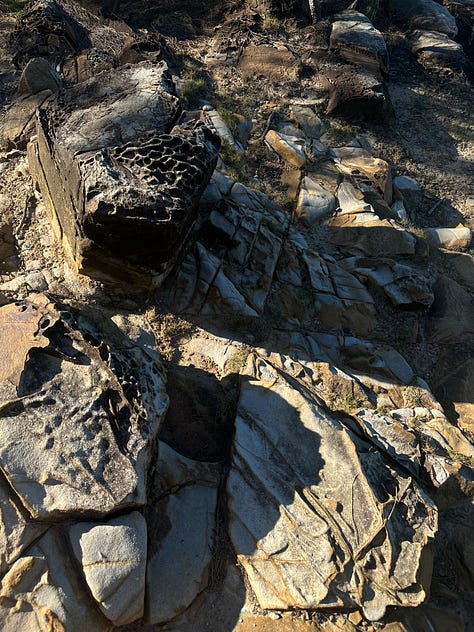

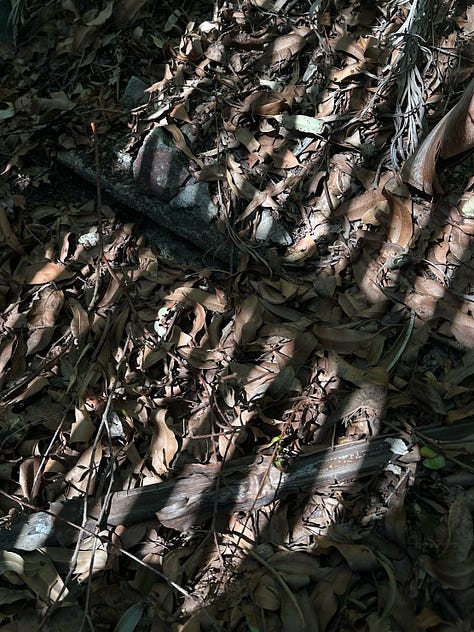
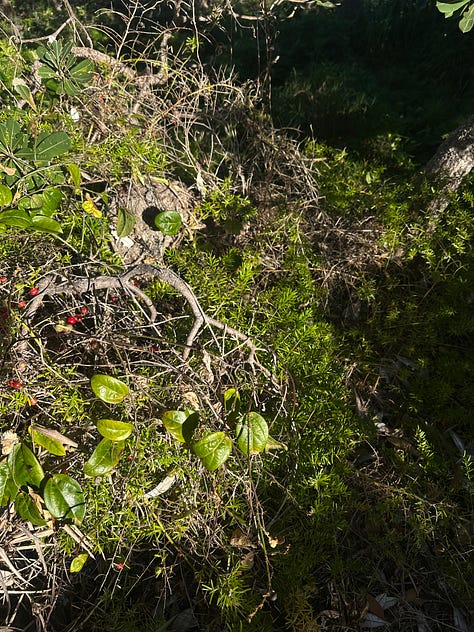
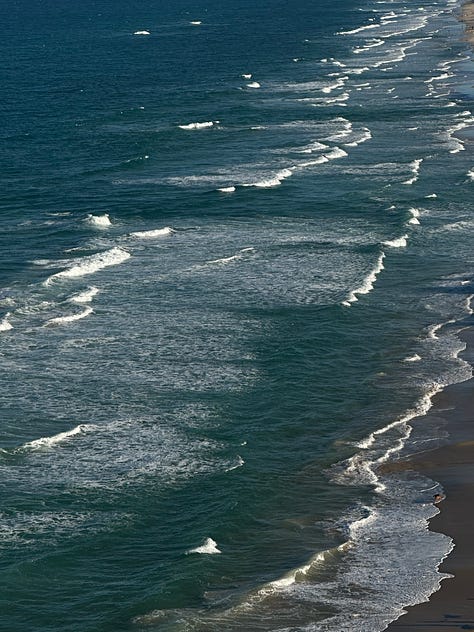
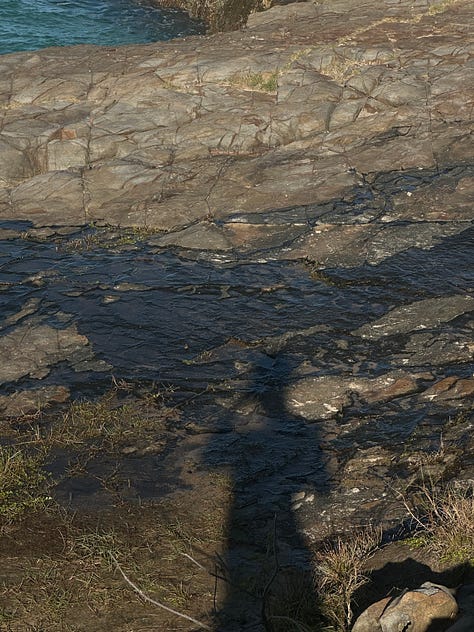
Can you imagine that I almost didn’t publish this piece? I thought it might be too much. Too snappy. Too unstructured. Too individualistic. Not collective enough.
But then I remembered where it came from.
I was hiking through a national park the other day, feeling lit up by the land, when my throat clogged. That’s how I knew words wanted to pour through me. So I pressed record. Spoke with no filter; it seemed like a series of heated, all-over-the-place words. Then later I read the transcription. I almost over-edited it, dulled it down to sound more ‘professional’. Because that ‘good girl’ in me — the one that still wants to be liked, to sound smart, to not ruffle too many feathers — she’s still here. I like her, but I don’t let her lead anymore.
We live in a time that glorifies collective action — and yet, paradoxically, there is no true collective without full individual expression. How can there be? The richest ecosystem requires the most diverse, thriving species. In fact, it’s the diverse, thriving species that make the ecosystem so rich. So I feel called to hold the weird space in-between. To be the bridge between individual and collective potential. That‘s where my heart beats.
So I shall keep speaking up.
Championing the individual.
Inspiring collective possibilities.
Keep writing things that don’t fit into categories.
Keep honouring the rhythm of my truth — even when it feels too much.
Even when it makes people uncomfortable.
For I know now: my wildness is not too much. It is nature.
And so is yours.
Never forget… you too are part of nature.
You don’t have to have it all figured out. Trust that your too-much-ness has a place, even if you don’t yet know where.
Demand more from your projects. From your industry. From the people around you. Most importantly, from yourself. Refuse to play small. You are here to birth something beautiful, something needed, something transformative — and it will not come from playing it safe. So raise the standard. Elevate the conversation. Call in the angels. Don’t wait to be given permission.
If your dream doesn’t exist yet, create it. Yes, it might not look like what others are doing. Yes, it may disappoint your parents, mentors or peers. But the meaningful path always involves risk.
Build a community you trust. Find your people — the ones who challenge and celebrate you. Make your idea part of a wider field of possibility by sharing, listening, co-evolving. No one does this alone. You’re not supposed to.
And as always, don’t wait for architecture school — or the profession — to fill in the gaps. Funding? Communication? Business? If you want to make bold things real, you’ll need these.
So, mould-breaker, trust what’s calling you. Even if it seems completely irrational right now. Because what’s dismissed today as impractical or naive will, in a few generations or even decades, become common sense. The designing ‘as’ nature. The unpredictable. The intuitive. The feminine. The alive.
To be wild and to pursue the unreasonable is to be ahead of your time.
So why wait?
As for now, the system doesn't yet know what to do with people like us — and that's the point. So let’s be unreasonable. Let’s hold the vision when others can’t fully grasp it yet. Let’s be guided by something deeper than approval. Let’s shape the spaces, systems, structures and cultures the future is longing for.
If you're ready to explore what's possible when we collaborate on wild ideas – whether through speaking, workshops or creative campaigns – I'm here → www.wasdnty.com
‘By embracing our own nature as an expression of Nature, humanity can become a conscious force of healing’ (Daniel Christian Wahl)
When we move from that place — from a deeper, wilder intelligence — our work becomes more than work. It becomes a force of nature. It becomes our gift.
In wild solidarity,
Inés
If you’re new here — hi and welcome! I’m Inés, an architecture graduate who refused to be boxed in by conventional ideas and expectations. Having struggled to fit the 'architect' mould myself, I now use my voice to instil self-awareness and inspire new possibilities — guiding fellow graduates out of the same constraints I once knew to discover your unique potential and create the systems change our world needs.
Be sure to also visit my other Substack, LEAD, where I delve deeper into further reflections that aim to complement, support and expand your journey of transformation.
Thanks for being here! :)
Additional reflections:
Disclaimer: Architecture Is Not A Box explores perspectives on alternative career paths and applications beyond traditional practice. While discussing the field of architecture broadly, any references to architecture-related work refer to activities that don't require professional licensure, unless specifically noted otherwise. This content is for educational and inspirational purposes.







I so feel this in my bones. What you say here applies to most industries and businesses. If we want systemic change, we don't need more "change" per sé, we need more of us going deep within to fully express our full potential, is there, where systemic change is created.